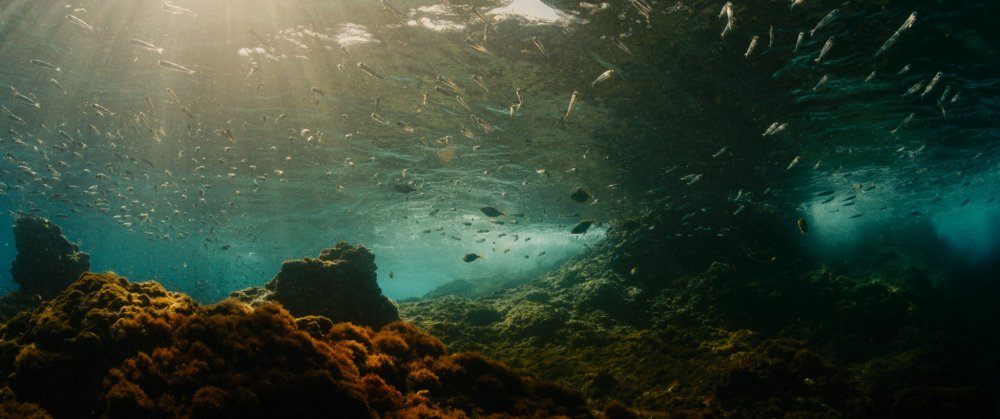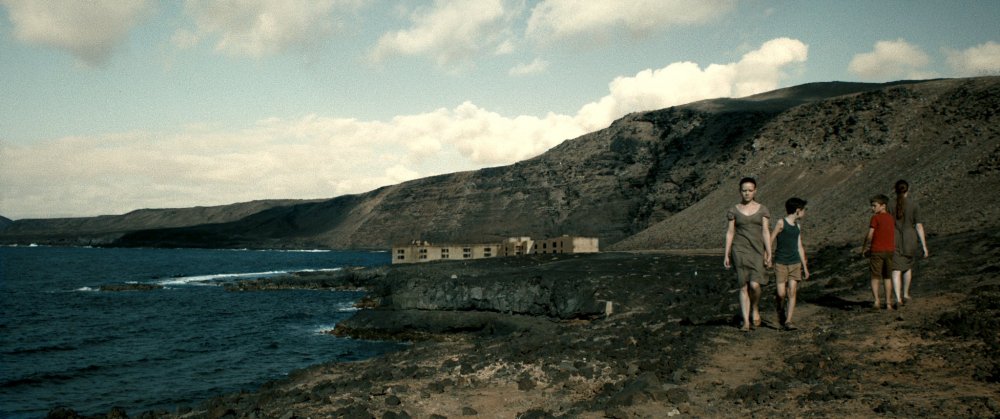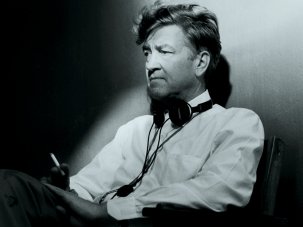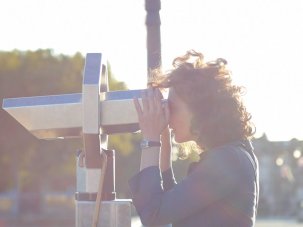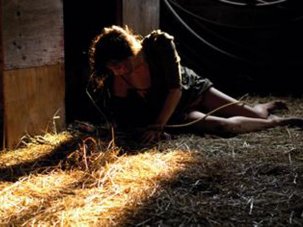Where do the boys fit in this scheme of creation? Or is the scheme itself just a heightened version, a surrealistic exaggeration, of what they can expect as they approach puberty? The world here – the dark volcanic sand, a tight little village of white houses – is as strangely but as satisfyingly organised as the dank tunnels and lush forest of Innocence. For Hadzihalilovic, the sense of control is essential to the creation of a complete, self-enclosed world, and to a visual aesthetic with its own stilled, enigmatic quality, like the de Chirico paintings she admires.
A shot in the opening title sequence – looking up from beneath the surface of the water as Nicolas swims above, like a lonely spermatozoon – suggests that the air of menace hanging over these worlds is not an external threat so much as the anxieties of growth and change, the struggle of life. The women – who the boys begin to suspect are not really their mothers – also look as if they might be in transition, their skin pallid and uniformly smooth, their large dark eyes vaguely cetacean. If Evolution is defined by its fantastical exaggerations, they seem tilted towards science fiction, as Innocence was to suggestions of horror. The scientific apparatus of cross-gender pregnancy and birth has a Cronenberg look, while the two humanoid creatures to which Nicolas gives birth might owe their p/maternity to David Lynch.
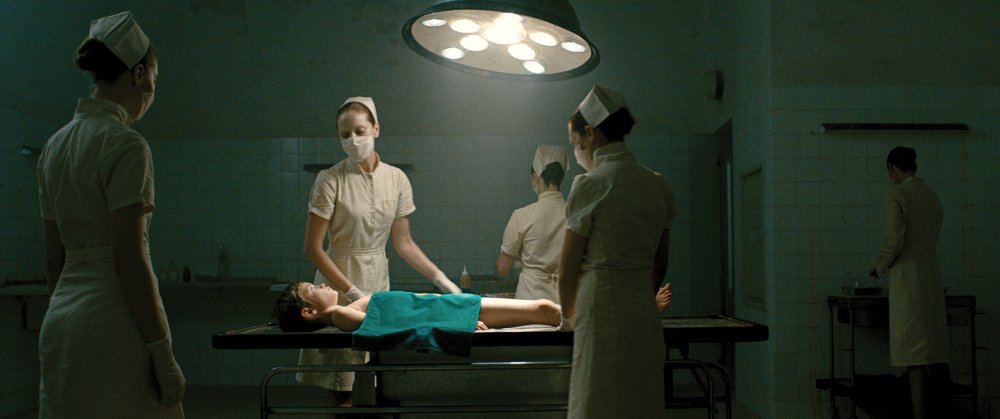
Elsewhere, there’s a glowing, detailed naturalism in Manuel Dacosse and Rafael Herrero’s underwater photography in the reefs around Lanzarote. This could be the world of Jacques Cousteau, but the naturalism has its own surrealistic shock, and the languorous movement of the multicoloured flora fits in Hadzihalilovic’s stated aesthetic: “We wanted to capture a kind of abstraction through organic matter and movement.” The ’Scope images are alternately immersed in the big blue or fragmented by dark, sulphurous spaces in the hospital.
Eventually, Nicolas is led into the depths when he is befriended by a nurse (Roxane Duran) at the hospital, and they set off on an underwater odyssey that is also a kind of mating. Or is it “the dream of a friend… somewhere on our very own planet”, as Mike Nichols described the relationship between the human protagonist and a cetacean companion in his non-surrealist fantasy The Day of the Dolphin (1973)? The nurse eventually abandons Nicolas and he finds himself on the shore of a brightly lit city that looks like our world. Only after she disappears do we learn that her name is Stella.
In the June 2016 issue of Sight & Sound
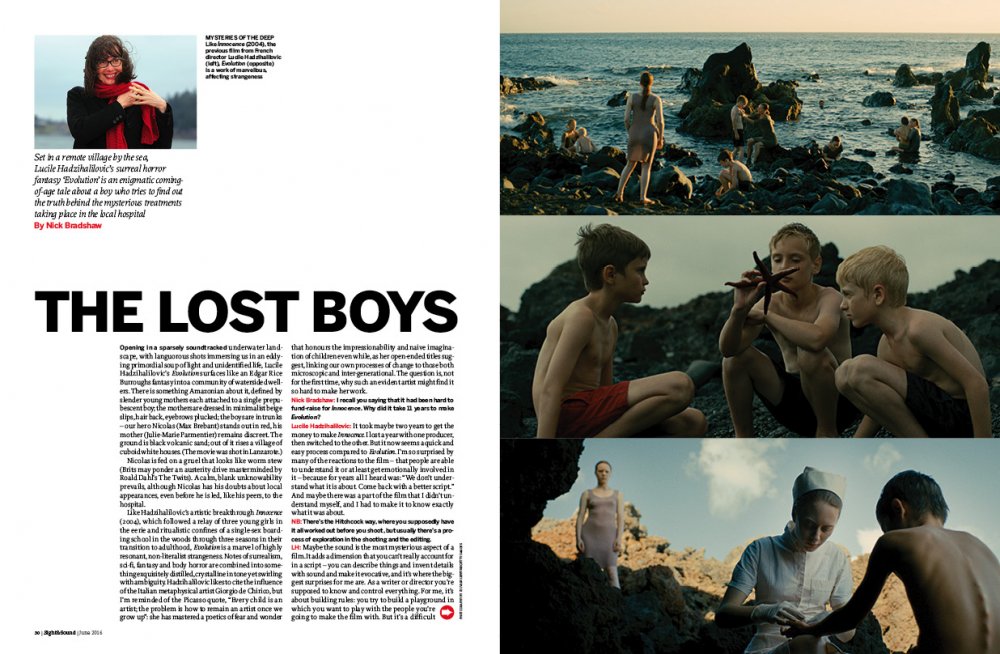
The lost boys
Set in a remote village by the sea, Lucile Hadzihalilovic’s surreal horror fantasy ‘Evolution’ is an enigmatic coming-of-age tale about a boy who tries to find out the truth behind the mysterious treatments taking place in the local hospital. By Nick Bradshaw.
→ Access the digital edition
→
Also recommended this week
The Sky Trembles and the Earth Is Afraid and the Two Eyes Are Not Brothers
Director Ben Rivers | UK 2015 | On limited release
theskytrembles.com | ► Trailer
A “visually sumptuous” exploration of colonialism, the act of travel and authenticity which begins as a documentary portrait of the filming of Oliver Laxe’s Las Mimosas in Morocco’s Atlas Mountains, and turns halfway through into an adaptation of Paul Bowles’s 1947 short story A Distant Episode as the filmmaker abandons his shoot. Reviewed by Violet Lucca in our June 2016 issue:
“This sense of doubt and unease runs up against the film’s views of Morocco, which never fail to be undeniably beautiful… Rivers preserves an intense intimacy with all his subjects in every shot, showing the bandits falling asleep, waking up, eating and laughing. Effortlessly establishing the daily rhythm of their lives on the road, such moments give this fantastical, barbarous tale a sense of humanity and realism.”
☞ See also On location with Ben Rivers’ The Two Eyes Are Not Brothers
☞ See also Willing spirits: Ben Rivers versus Albert Serra
Arabian Nights Volume Three The Enchanted One
Director Miguel Gomes | Portugal/France/Germany/Switzerland | On regional release
artangel.org.uk/project/the-sky-trembles | ► Trailer
The final part of Gomes’s sweeping Arabian Nights trilogy, which aims to combine an account of Portugal’s hardships under austerity with elements of escapist fantasy inspired by the stories of The 1001 Nights. Reviewed by Hannah McGill in our June 2016 issue:
“Does the film ultimately argue that imagination is a decadent distraction from the real work of revolution? It would be hard to draw such a conclusion about a film that dwells so long on the artistry of chaffinches, or summons its mythical heroine to a meeting with her father via a banner tacked to an aeroplane that reads ‘ZEHERAZADE, SERIOUS FAMILY TALKS, NOW!’”
-
Sight & Sound: the June 2016 issue
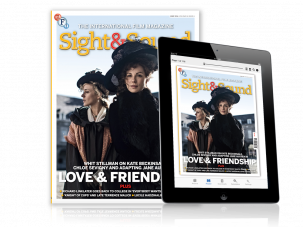
Whit Stillman on his acid-tongued Jane Austen adaptation Love & Friendship. Plus Richard Linklater’s college daze, Lucile Hadzihalilovic&...
-
The Digital Edition and Archive quick link
Log in here to your digital edition and archive subscription, take a look at the packages on offer and buy a subscription.




